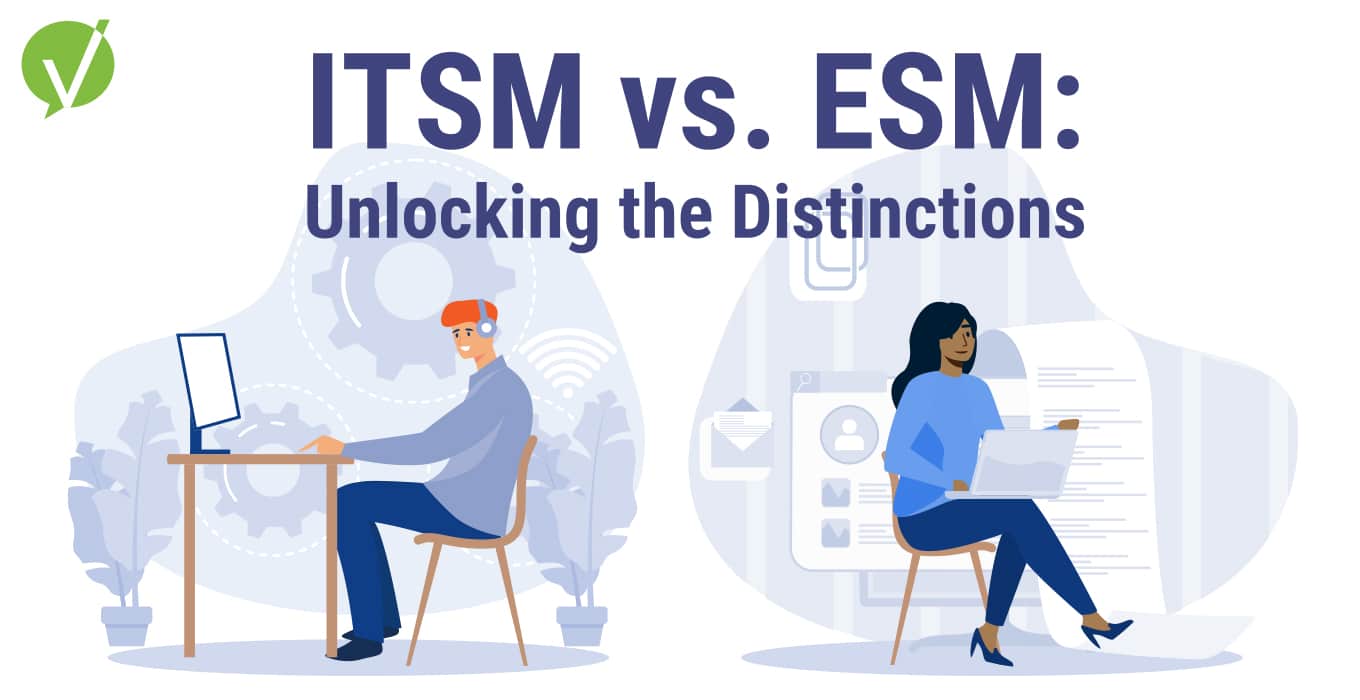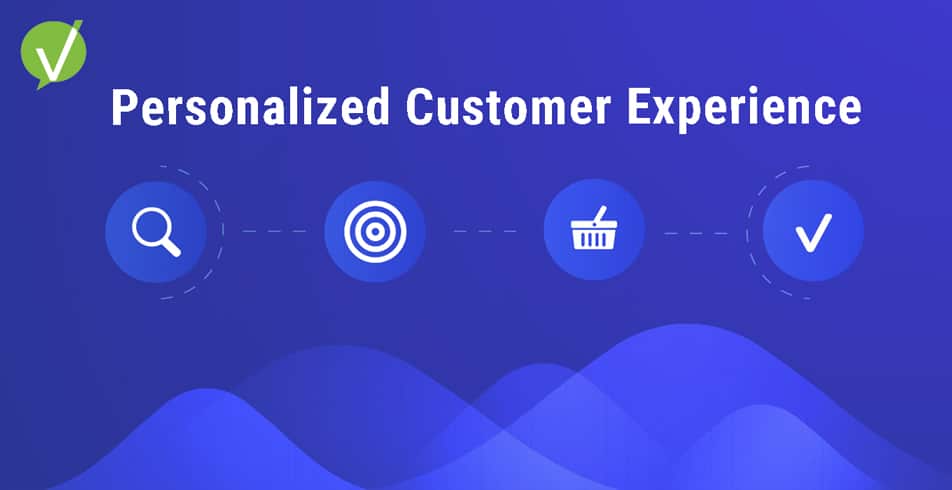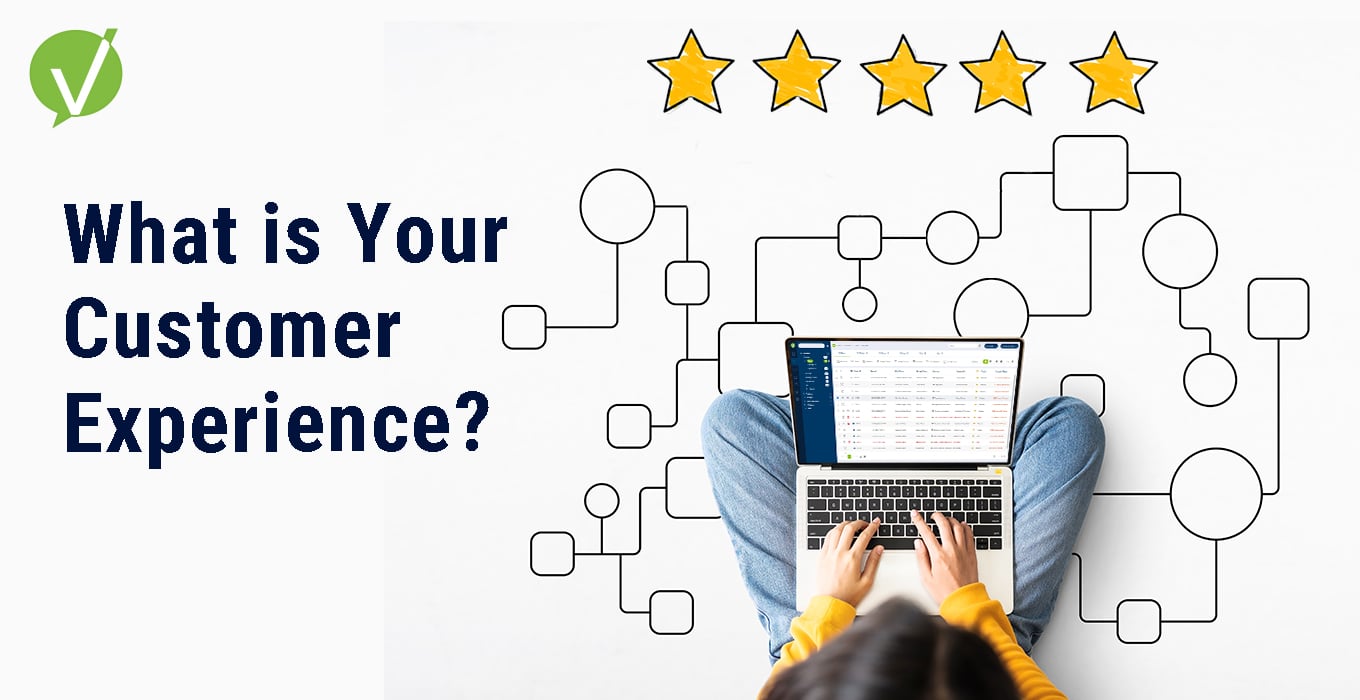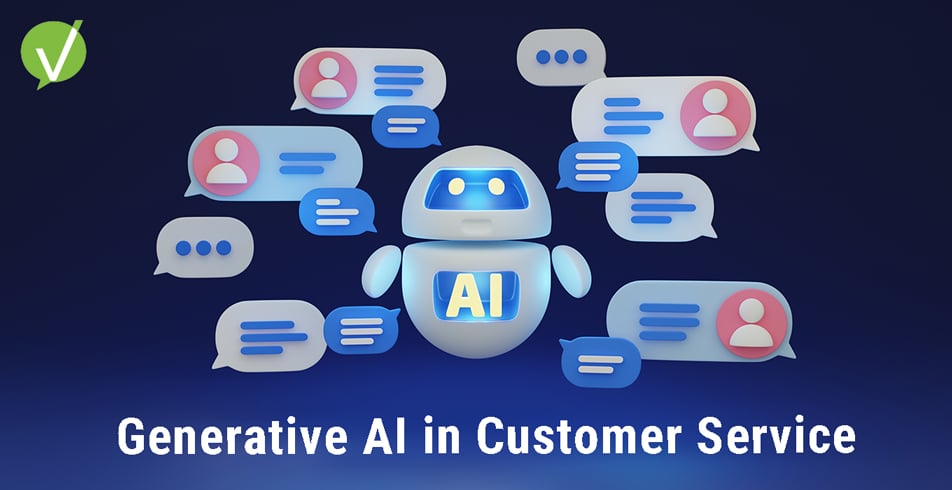Enterprise Service Management vs. IT Service Management: Unlocking the Distinctions
Introduction
In this article, we’ll take a deeper look into ITSM and ESM, exploring how they impact diverse business verticals and, more importantly, why integrating both could be a game-changer for your organization.
In the constantly evolving arena of service management, gaining a clear understanding of the fundamental distinctions between Enterprise Service Management (ESM) vs. IT Service Management (ITSM) is crucial. Going beyond mere differentiation; it is a pivotal initiative that can significantly alleviate several common business pain points. Addressing these differences comprehensively allows organizations to pave the way for more informed decision-making that has the potential to:
- Enhance Operational Efficiency
- Improve Service Effectiveness
- Foster Cross-Departmental Collaboration
- Streamline Business Processes
- Optimize Resource Allocation
- Boost Customer Satisfaction
- Drive Innovation
- Ensure Regulatory Compliance
These benefits, in turn, help address some of the major pain points businesses encounter:
- Inefficiencies in Service Delivery
- Siloed Operations and Communication
- Resource Wastage
- Compliance Risks
- Customer Dissatisfaction
- Stagnation in Growth
- Competitive Disadvantages
- Lack of Agility
By understanding the differences between Enterprise Service Management vs. IT Service Management, organizations can proactively tackle these challenges and work toward achieving their goals efficiently and effectively.
Bridging the Gap: Enterprise Service Management vs. IT Service Management
What is IT Service Management (ITSM)?
ITSM is the business practice of structuring the delivery of information technology as a service.
- Treating IT as packaged systems of hardware, software, business practices, and support built to meet a customer’s needs.
- Encompassing processes for the complete lifecycle of an IT service, from conception and design to development, delivery, and ongoing support.
- Can be applied to manage various workplace technology, including software, end-user devices, networking assets, and servers.
ITSM Example: John, an operations manager at a manufacturing company, is preparing to set up a new production line. He uses the ITSM approach by submitting a request through the service desk for new machinery. The request includes details on the required equipment, technical specifications, and maintenance requirements. The ITSM team quickly processes the request, ensuring a seamless production line setup.

What is Enterprise Service Management (ESM)?
ESM extends the core concepts of ITSM to all business practices, including fleet management, facilities services, human resources, and project management.
- Centralizes service management practices using specialized software tools and personnel.
- Consolidates different service workflows across the company, generating economies of scale and fostering collaboration.
- Empowers IT to apply advanced technologies like AI and analytics to various business functions.
ESM Example: Sarah, the facilities manager in a corporate office, needs to schedule regular maintenance for HVAC systems. She utilizes the ESM platform to create a maintenance request, specifying the date, location, and required tasks. The request seamlessly flows through the ESM system, with automated notifications to the maintenance team. The result is efficient maintenance scheduling without the need for manual paperwork.

Why It Matters: ESM and ITSM
Before delving into the intricacies, let’s address the elephant in the room – why should you care about both ESM and ITSM? The answer is simple yet profound. ESM extends the boundaries of service management beyond IT to encompass all business processes, including HR, Finance, Facilities, and more. It’s a holistic approach that promotes cross-departmental collaboration and efficiency. ITSM, on the other hand, is the cornerstone of managing IT services and infrastructure. Both are essential cogs in the wheel of modern business operations.

Peeling Back the Layers: ITSM
Let’s begin by unraveling the essence of IT Service Management (ITSM). It’s primarily focused on optimizing IT services and infrastructure. With well-established frameworks like ITIL, DevOps, and COBIT. ITSM provides the blueprint for delivering IT services effectively while ensuring they align with business goals.
ITIL (Information Technology Infrastructure Library) is a comprehensive framework and set of practices for IT Service Management (ITSM).
- Provides guidelines and best practices for planning, delivering, managing, and continually improving IT services to meet business needs.
- Focuses on processes and activities that ensure IT services align with the organization’s objectives, ultimately enhancing service quality and efficiency.
DevOps is a cultural and technical movement that promotes collaboration between development and IT operations teams.
- Emphasizes automation, continuous integration, continuous delivery (CI/CD), and rapid deployment to increase the speed and efficiency of software development and IT service delivery.
- Aims to break down silos, reduce bottlenecks, and improve communication and collaboration between development and operations teams.
COBIT (Control Objectives for Information and Related Technologies) is a framework for governance and management of enterprise IT.
- Provides a comprehensive framework for managing and governing information and technology with a focus on risk management, compliance, and performance improvement.
- Offers a set of principles and best practices that help organizations ensure that IT supports business objectives while maintaining control and compliance.
Unlocking ITSM’s Potential
Realizing the full potential of IT Service Management (ITSM) is not just a strategic move; it’s a vital step towards addressing major pain points and bolstering your business’s efficiency, revenue generation, and overall success. By harnessing ITSM effectively, you can:
- Elevate Service Quality: Deliver exceptional service experiences that satisfy customers and clients, enhancing your reputation.
- Minimize Downtimes: Reduce costly disruptions and ensure uninterrupted business operations, boosting productivity.
- Optimize Incident Management: Handle issues swiftly and effectively, minimizing the impact on your operations and customers.
- Align with Organizational Objectives: Ensure that IT services are in sync with broader business goals, enhancing strategic alignment.
Unlocking ITSM’s potential empowers you to address pressing business challenges:
- Cost Inefficiencies: Streamline operations to reduce unnecessary expenses and resource wastage.
- Service Disruptions: Minimize downtime and service disruptions to maintain seamless operations.
- Customer Dissatisfaction: Improve service quality and responsiveness to boost customer satisfaction and retention.
- Missed Revenue Opportunities: By aligning IT services with organizational objectives, you can seize revenue-generating opportunities more effectively.
In essence, ITSM has the potential to be a powerful driver of efficiency, profitability, and overall business success when fully harnessed and optimized.
Expanding Horizons: ESM
Now, let’s shift our focus to Enterprise Service Management (ESM), a transformative paradigm that extends service management to cover all business processes. In ESM, everything from HR processes to financial operations comes under the purview of service optimization.
The Boundless World of ESM
Understanding Enterprise Service Management (ESM) is pivotal because it operates in a unique territory, distinct from the structured frameworks like ITIL often associated with IT Service Management (ITSM). Instead, ESM thrives on innovation, enabling organizations to harmonize people, processes, and automation, resulting in streamlined operations across various departments. By exploring the potential of ESM, you can:
- Harness Diverse Benefits: Unlock a wide range of advantages that ESM offers, spanning efficiency, collaboration, and customer satisfaction.
- Explore Versatile Applications: Discover the multitude of ways ESM can be applied to transform operations in departments such as HR, Finance, and Facilities.
Unlocking ESM’s potential empowers businesses to address significant pain points:
- Siloed Operations: Overcome the challenges of fragmented departmental operations and enhance cross-functional collaboration.
- Resource Inefficiencies: Optimize resource allocation and utilization for improved cost-effectiveness.
- Customer Experience: Elevate the customer experience by streamlining internal processes that impact external interactions.
- Competitive Edge: Gain a competitive edge by leveraging ESM’s innovation potential and adaptability to meet evolving business needs.
In summary, ESM’s unique approach to service management holds the promise of revolutionizing various business departments and addressing critical challenges, ultimately contributing to enhanced efficiency, profitability, and overall success.
A Quick Comparison: Enterprise Service Management vs. IT Service Management
How do Enterprise Service Management (ESM) and IT Service Management (ITSM) stack up against each other? Let’s explore some of the key aspects.
Embracing the Future of ITSM and ESM
As we wrap up this review, it’s vital to consider the future of IT and Enterprise Service Management. The integration of emerging technologies, such as AI and automation, can revolutionize service management further. In the dynamic landscape of service management, distinguishing between Enterprise Service Management (ESM) and IT Service Management (ITSM) is more than just an academic exercise—it’s a strategic necessity.
As we’ve explored, both play distinctive yet intertwined roles in optimizing business functions, fostering collaboration, and boosting efficiency. But how can these insights be practically harnessed for your organization’s success? By delving deeper into ESM and ITSM, you stand to harmonize your business operations, creating a synergy that positions you ahead of the curve. Small improvements and continuous enhancements are key to staying ahead. As the world faces inevitable disruptions, be prepared to adapt and thrive.
Given the need for better ITSM performance and discipline, and better integration of systems with ITSM, as well as the desire to expand into ESM, this state of aging ITSM infrastructure presents an opportunity for organizations to reevaluate the tech backbone of their service management practice in order to align it with future priorities.
Consider adopting a comprehensive platform that aligns with ITIL principles to support your teams effectively. For over two decades, Vivantio has been at the forefront of optimizing service organizations. We’re ready to guide you in harnessing the full potential of ESM and ITSM. Explore the synergies and transform your business processes. Contact our team today or schedule a free demo to kickstart your journey towards elevated service management practices.








